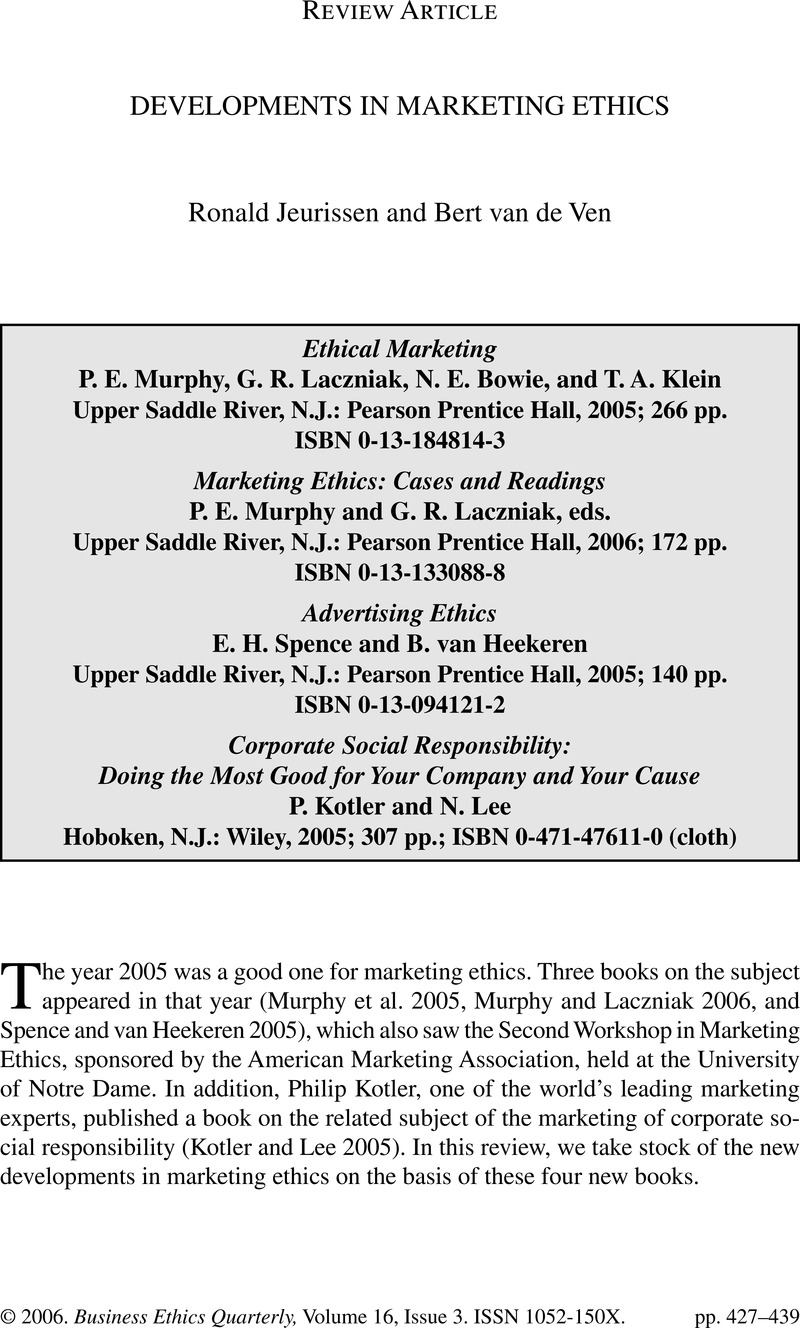Crossref Citations
This article has been cited by the following publications. This list is generated based on data provided by Crossref.
WILSON, R. MARK
GAINES, JEANNIE
and
HILL, RONALD PAUL
2008.
Neuromarketing and Consumer Free Will.
Journal of Consumer Affairs,
Vol. 42,
Issue. 3,
p.
389.
Doster, Leigh
and
Tyrrell, Julia M.
2011.
Marketing communications in the classroom: The parents' view.
Journal of Marketing Communications,
Vol. 17,
Issue. 1,
p.
1.
Jiao, Yuntao
Wang, Jun
and
Guo, Hongyu
2013.
Evaluation Professional Ethics of Network Business.
p.
392.
Lee, Jung-Yong
and
Jin, Chang-Hyun
2019.
The Role of Ethical Marketing Issues in Consumer-Brand Relationship.
Sustainability,
Vol. 11,
Issue. 23,
p.
6536.
Moraes, Caroline
Kerrigan, Finola
and
McCann, Roisin
2020.
Positive Shock: A Consumer Ethical Judgement Perspective.
Journal of Business Ethics,
Vol. 165,
Issue. 4,
p.
735.
Chaturvedi, Charul
and
Mishra, Debesh
2022.
Multidisciplinary Perspectives Towards Building a Digitally Competent Society.
p.
248.
Chaturvedi, Charul
and
Mishra, Debesh
2023.
Research Anthology on Business Law, Policy, and Social Responsibility.
p.
184.
Reddy K., Pradeep
Chandu, Venkateswarlu
Ryali, Narendra
Gangula, Amala
Mishra, Debesh
and
Mishra, Swagatika
2023.
Data-Driven Approaches for Effective Managerial Decision Making.
p.
259.



